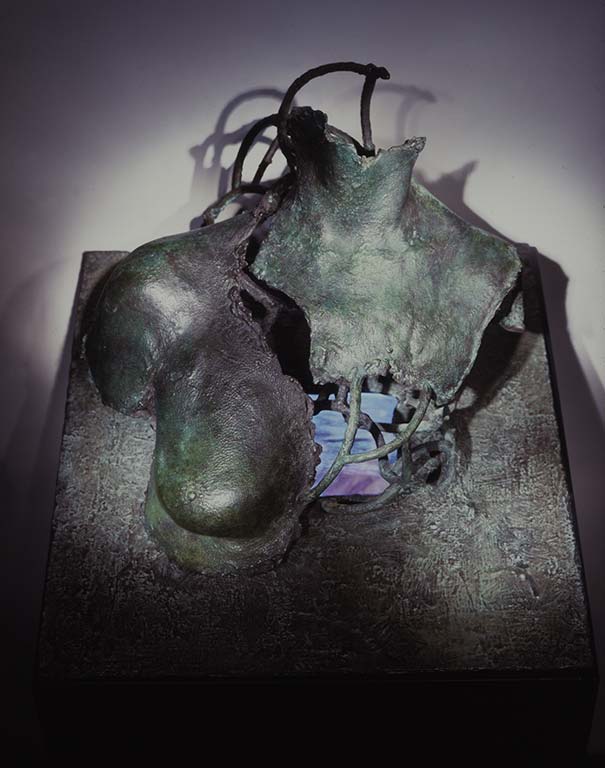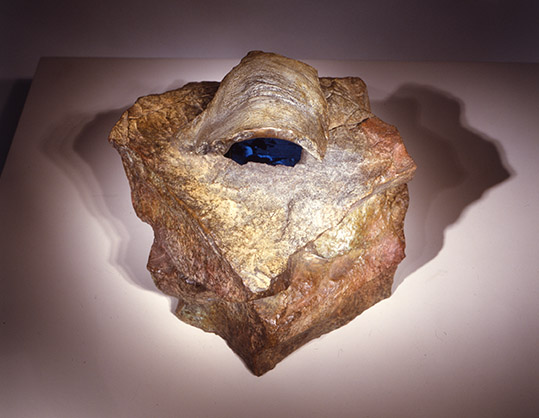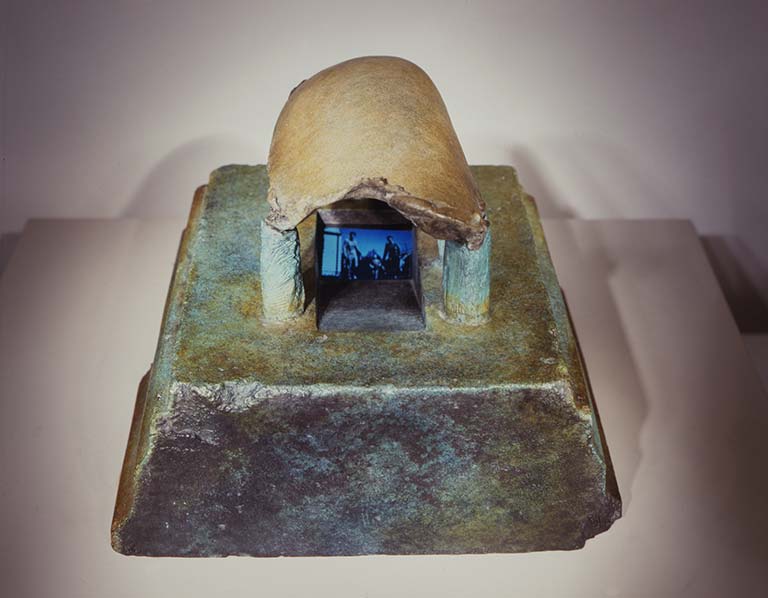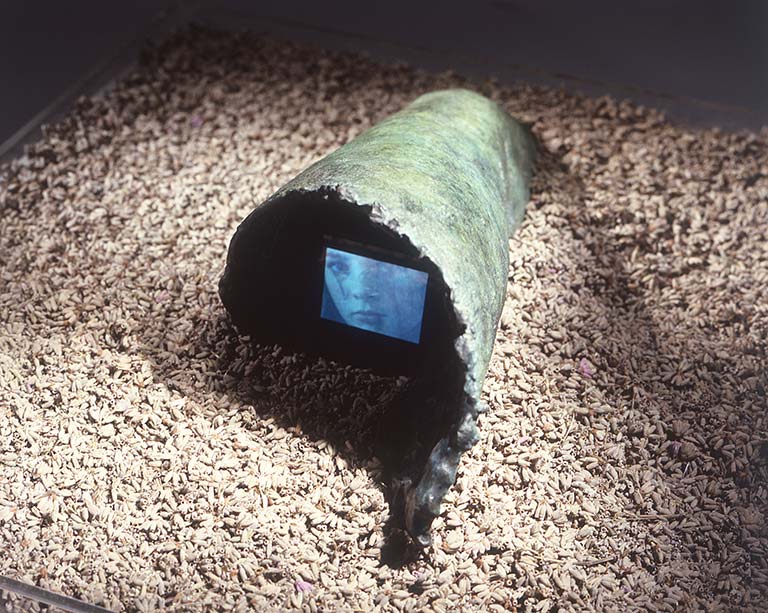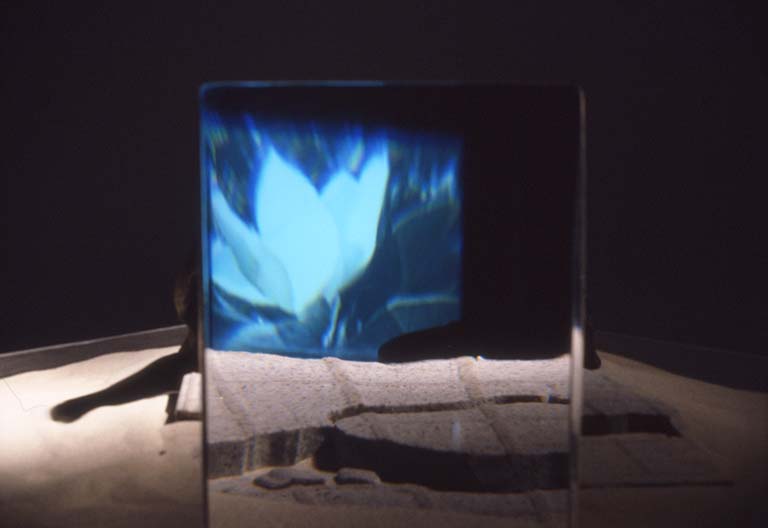Early Events: Five Narrative Sculptures
1996 – 2000
Five narrative sculptures that form part of a series in which the artist examines her psyche. Like shards of brilliant glass, Lijn discovers early memories embedded within different parts of her body:
Seagate: The Sea in my Elbow, 1996-98
Great Neck: Shouldering the Burden of Childhood, 1996-98
Liliane Lijn’s series of installations Early Events is composed of five narrative sculptures: a bust, an elbow, a shoulder, a thigh and a back, cast in bronze from her own body. They seem uncanny; like le corps morcele (“the fragmented body”) viewed through Lacan’s mirror(–phase), they are reminiscent of the dismembered bodies depicted in the work of Hieronymus Bosch. Embedding monitors from which videos act as storytellers, the five narrative sculptures ventriloquize five significant events from Lijn’s early childhood and form part of a larger series, entitled ‘A Dialogue with The Self’, in which she examines the strata of her psyche.
According to Freud, “fragments of memories” from earlier childhood years have left indelible traces on our inner selves and they surface as isolated recollections. Resembling archaeological finds, Lijn’s bronze casts embody Freud’s “fragments of memories” and seem to have previously been buried, bearing the metaphor for psychoanalysis’ act of excavating one’s repressed past, whilst also projecting to the future. “My work with the female body, with my own body, is an attempt to remember. To connect fragments of my Self. […] I decided that a small part of my body could represent the whole and a single memory a fragment of my life.”
(excerpt from Gabriella Daris’ essay ‘Liliane Lijn’s fragments of memories and the fragmented body’, taken from the catalogue published on the occasion of the exhibition Liliane Lijn, Early Events: Five Narrative Sculptures, Summerhall, Edinburgh, 2017)
